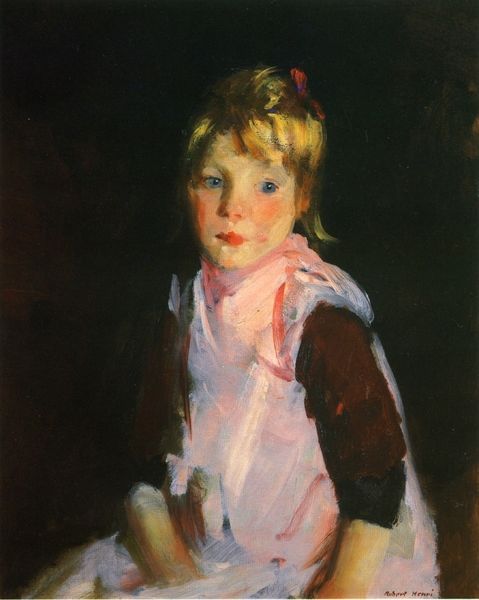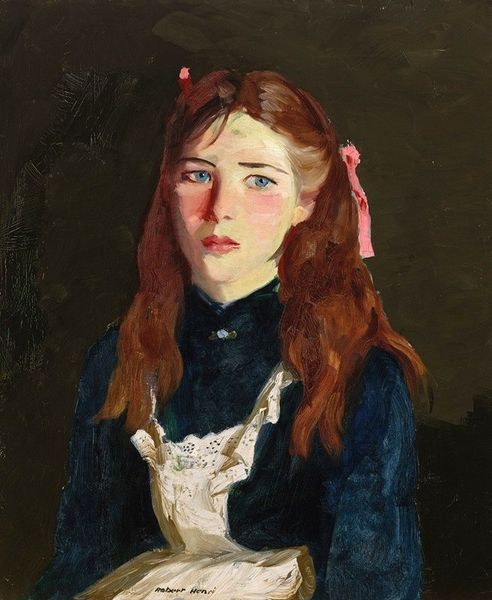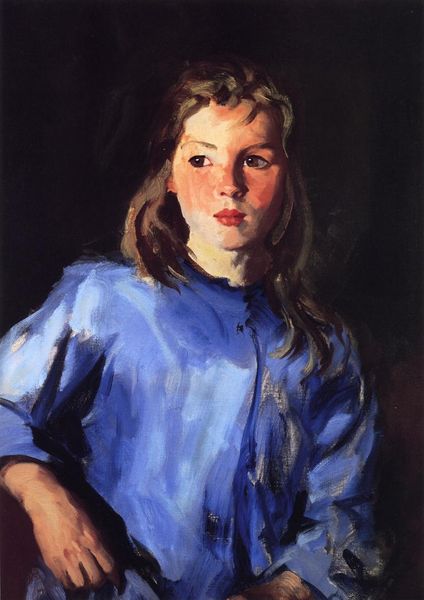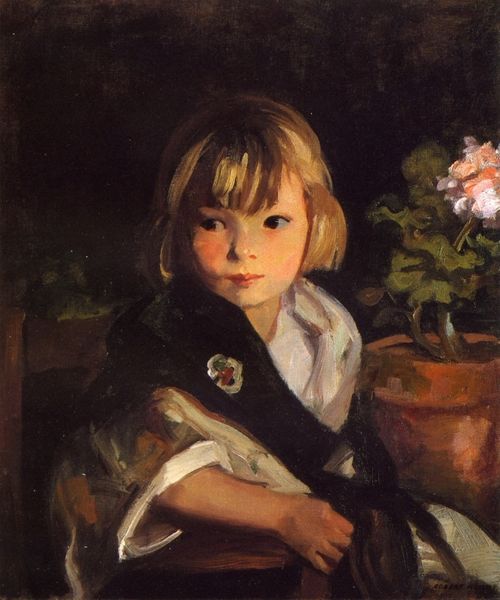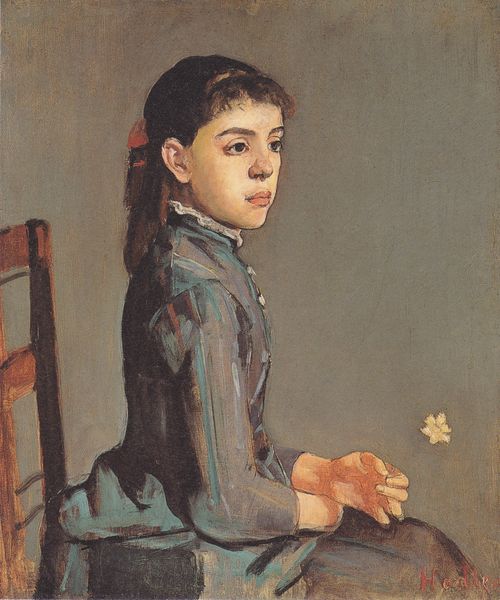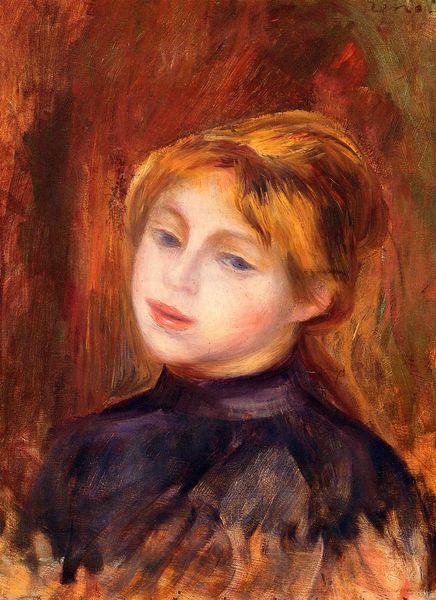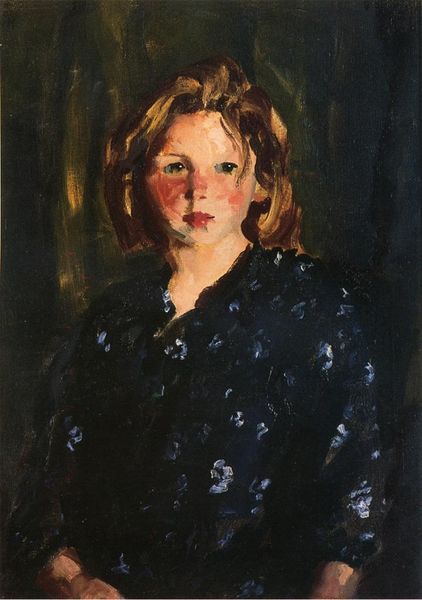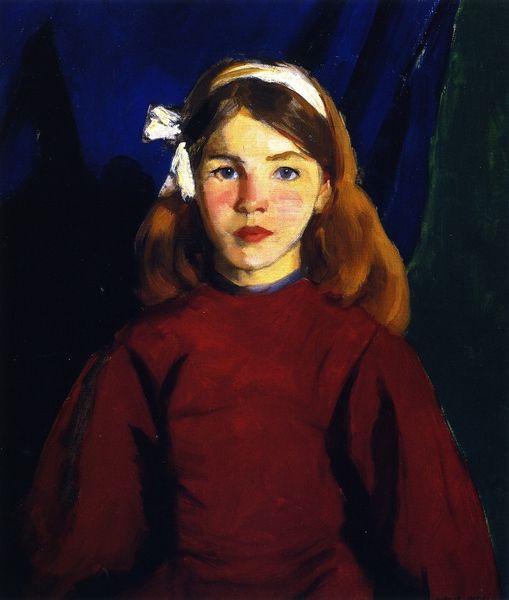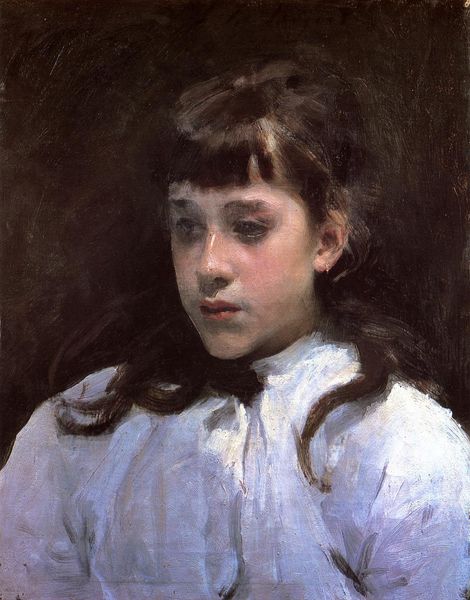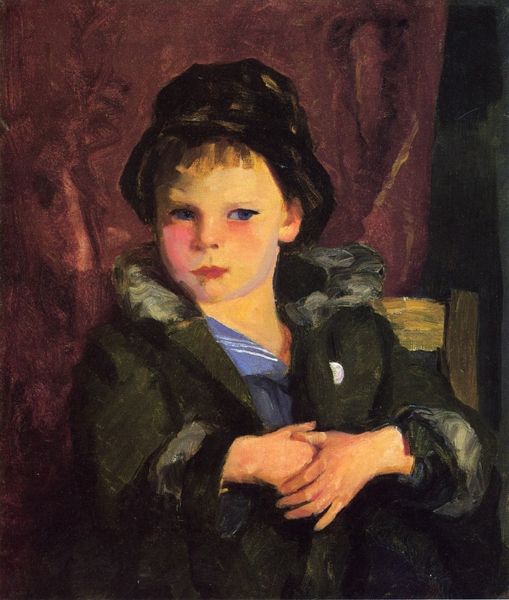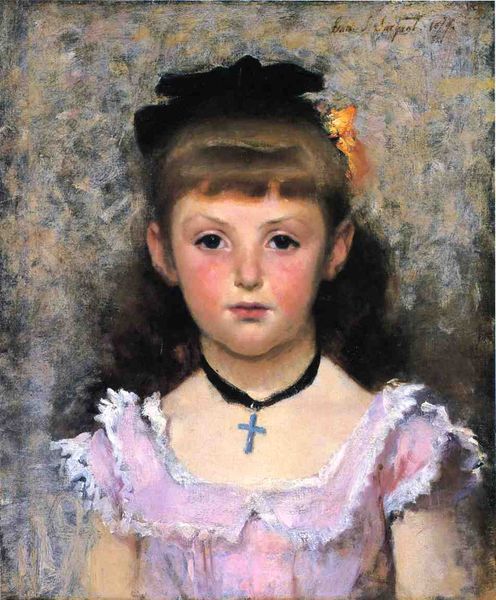
Copyright: Public domain
Editor: This is Robert Henri’s “Nora,” painted in 1913 with oil on canvas. It's a portrait of a young girl, but her serious gaze makes her seem much older. What social commentary do you see in this portrait? Curator: Well, given Henri's association with the Ashcan School, and their focus on depicting everyday life, particularly of urban populations, I see a conscious decision to portray children of the era not as idealized cherubs, but as individuals shaped by their environment. It prompts questions: What kind of life did Nora lead? How does this stark, realistic depiction contrast with more sentimental portraits of children that were common at the time? Editor: I see your point. So, rather than simply capturing a likeness, Henri is making a statement about how society views and shapes childhood? Curator: Precisely. The choice of clothing, the restrained color palette, and even Nora's expression – they all contribute to a portrayal that challenges traditional portraiture. Consider also that early 20th-century American art saw a rise in social realism alongside rapid urbanization and industrialization. How might Nora's portrayal resonate with these larger societal shifts? Editor: It’s like he’s rejecting the romanticized view of childhood and forcing us to acknowledge these children within the reality of the world around them. Is that a common theme for the Ashcan School artists? Curator: Absolutely. Many Ashcan artists used their work to confront the realities of urban life, and Henri was particularly interested in capturing the spirit and energy of individuals within that context. His portraits weren't just about aesthetics, but about documenting and interpreting the human experience within a specific social and historical moment. What are your thoughts? Editor: This was an incredible dive into how one piece of art reflects not just individual artistry but social and cultural shifts, thanks. I have learned to look at a simple portrait as an artifact loaded with historical meanings. Curator: And I rediscovered how impactful early-twentieth-century American paintings are at embodying these transformations. It highlights the power of art as social documentation and encourages us to keep asking these questions of every artwork we study.
Comments
No comments
Be the first to comment and join the conversation on the ultimate creative platform.
